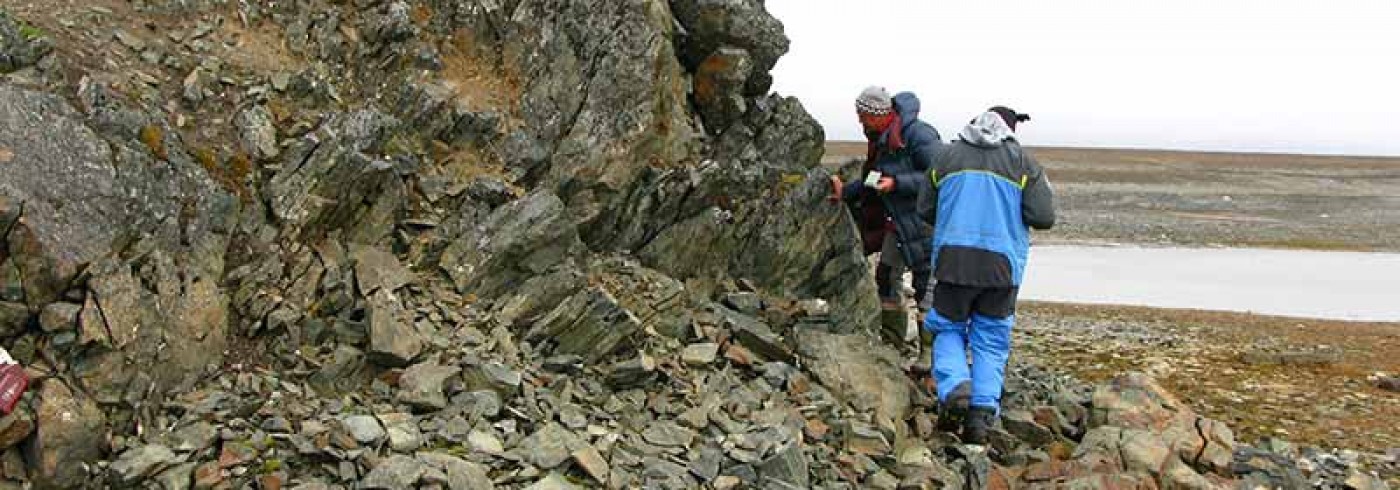Neoproterozoic mountain building in southern and central Svalbard
1 August 2011 - 1 September 2011
Sketch reconstruction of the late Mesozoic North Atlantic Caledonides showing the Grenville–Sveconorwegian basement distribution: a) the
interpretation preferred in recent reconstructions of Rodinia; b) alternative interpretation.
This project investigates Neoproterozoic (1000−542 Ma) orogens in the western Eurasian Arctic and how they were affected by later tectonic episodes. Previous work in the high Arctic suggested the existence of a northerly continuation of the Grenville−Sveconorwegian orogen (figure 1), a major mountain belt of several thousand kilometres’ latitudinal extent that formed about one billion years ago. Moreover, the trend of the late Neoproterozoic Timanide Orogen across the Barents Shelf is equivocal and little is known about its involvement in the Caledonian orogeny.

Marvågen Bay: the camp was kept small since it was moved by “shuttle traffic” on foot in several steps from Bellsund to Isfjorden (Figure 2) – a challenge given the increasing number of rock samples. Photo: Michael Krumbholz
The basement of the Barents and Kara shelves is now covered by thick sedimentary succession. Little to nothing is known about the nature of the underlying basement and how it was assembled, possibly during the Neoproterozoic, despite its huge natural resource potential. A viable tectonic model of the western Eurasian Arctic is required to improve our knowledge of this shelf basement, and to enhance our understanding of the geological history of Arctic margins in general.

Svalbard’s Caledonian terranes: the current project is examining the south-western terranes; the field area is indicated by a box.
To address this lack, our research focuses on southern and central Svalbard with unique exposures of Neoproterozoic rocks, both deformed and undeformed. A reconnaissance expedition in westernmost Nordenskiöld Land (figure 2) conducted by four geologists during the 2011 field season revealed that the Neoproterozoic basement in that area is composed mostly of sedimentary successions, equivalents of those known from areas farther south. Representative samples of quartzites and mafic rocks were taken forprovenance and geochemical studies to discover paleogeographical affinities. The highlight of the field season was the discovery of a yet unknown succession of exotic, very-high-grade metamorphic rocks (including metamafic rocks containing garnet). These may represent the northern continuation of the circa 640 Ma (Timanian) metamorphic basement described in southern Spitsbergen (Wedel Jarlsberg Land). The collected material has already been processed and the first geochronological results should be available in late spring 2012.
Based on the 2011 results, in the upcoming main fieldwork of the project in 2012, we will focus not only on southern Spitsbergen (Sørkapp), but also to visit Prins Karl Forland in western central Spitsbergen (figure 2).









